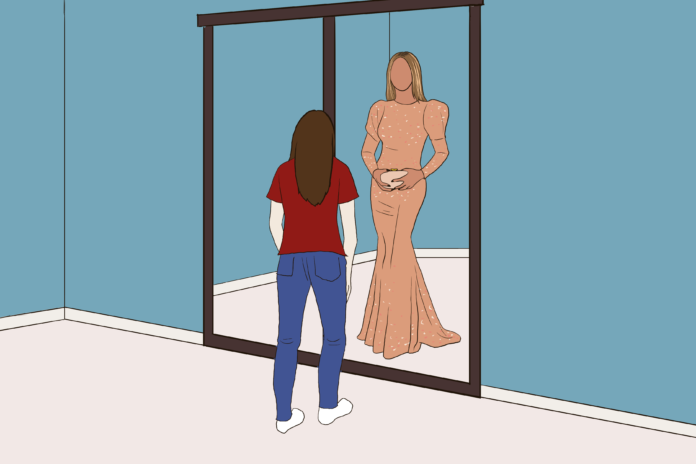Celebrity and luxury fashion doesn’t dictate style culture, at least not alone
I am not someone who keeps up with fashion trends, but fashion itself still plays an important role in my life. It’s one of many physical manifestations of society and culture, and for many of us, it’s an outward expression of self.
Since freshman year of high school, one of my all-time favorite style icons has been Lemon Breeland from Hart of Dixie. No one knows how to pull off bold patterns and bright fabrics better than Lemon, a sassy and gritty southern belle. But my love for Lemon Breeland’s style is just one example of the infatuation that our culture has for celebrity style and fashion. When I was bored in high school, I spent a good amount of time scrutinizing looks from the biggest fashion events like the Met Gala to celebrity streetwear, captivated by the breadth and diversity of fashion.
My obsession and fascination with different celebrity styles was just one of the many clear indications that fashion is not vain or trivial. It can be a formative experience, defining the culture and perception of different decades and eras.
Fashion often feels like a top-down structure in which top style icons such as Blake Lively or Idris Elba sanction trends to be lauded and celebrated and become embodiments of what good style looks like. The scrutiny over celebrities’ style in fashion blogs and magazines is a testament to the immense leverage fashion has in shaping culture. From the Kardashians to Meghan Markle, celebrities live under a thick magnifying glass that serves as a means to amplify and spread their style
When taking a step back, however, I’m not sure if viewing culture through the lens of celebrity fashion is an accurate portrayal of the role that fashion plays in our daily lives. Fashion is often regarded as a topic of immense cultural value but only for those who devote the time and resources to study and scrutinize it at its depths, like celebrities, designers and other artists. But fashion is an intimate part of every individual’s being.
We all make decisions every day, conscious or not, on what colors and patterns best define us. When we think about the trajectory of style through different decades in history, we don’t solely or even necessarily focus primarily on the trends of affluent fashion houses and designers. Every era has a style icon, but we often view these eras of fashion through the style choices of ordinary people — students, teachers, workers and others who define fashion culture based on their individual style choices.
Even changes in today’s luxury fashion encapsulate this idea. In recent years, many luxury brands have gravitated away from their usual elegant and up-scale products to more casual, laid back and informal clothing articles. Part of the reason for this shift is the increasing presence of millenial and Gen Z consumers in luxury fashion.
Fashion and luxury aren’t one and the same, although we often conflate them as such. Many of today’s luxury brands are large fashion powerhouses that hold immense cultural capital, but it would be wrong to assume that fashion is a conversation for luxury brands to lead. This is partly because fashion is something every one of us, style enthusiast or not, interacts with on an intimate level. The resurgence of buying vintage clothing or thrifting, for example, allows consumers to find their own unique style through more affordable means. But, in part, it’s also a result of recent changes in luxury fashion.
Luxury brands have been moving toward casual streetwear for younger consumers, incorporating sweatpants, athletic wear and other clothing items into their collections. What makes these past few years even more unique is the emergence of services that allow for millenial and Gen Z consumers wider access to luxury fashion products, even if it doesn’t mean ownership. Outlets like Rent the Runway allow for a broader range of consumers to engage with a section of the fashion industry that may have otherwise been out of reach.
Luxury brands and the fashion industry are ever-evolving, and although this new trend may not speak large volumes, it’s indicative of the dynamic and ever-present nature of fashion. Although I may be the biggest fan of Lemon Breeland’s style, at the end of the day, fashion isn’t necessarily driven by the trends from the top of popular culture. It comes from the mingling and appreciation of the style choices and we all make every day.
Written by: Simran Kalkat — skkalkat@ucdavis.edu
Disclaimer: The views and opinions expressed by individual columnists belong to the columnists alone and do not necessarily indicate the views and opinions held by The California Aggie




